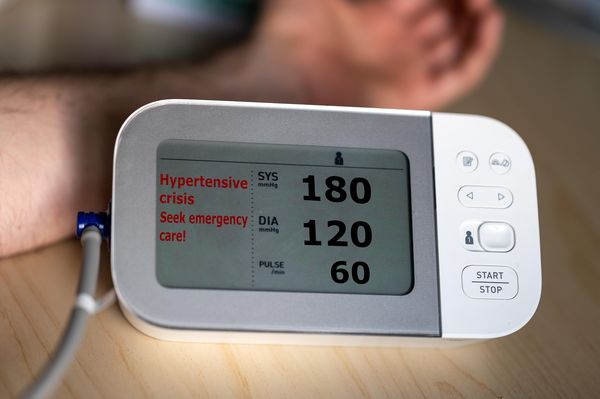
dndavis; Canva
What Is a Bank Stress Test?
In a nutshell, a stress test is an assessment of a bank or other financial institution’s overall health. Just like doctors find out how strong a patient’s heart is by testing it at different levels of exertion, a bank’s health is revealed by putting it through several “worst-case scenarios” to make sure it has enough capital that it can withstand losses while continuing to meet its credit obligations and lend to customers.
These stressors could include a number of factors, such as:
- Recessions
- Stock market crashes
- Supply shocks
- Inflationary pressures
- Interest rate increases
- GDP declines
- Oil price increases
- Unemployment surges
Stress tests were mandated by the Dodd-Frank Wall Street Reform and Consumer Protection Act of 2010 in an effort to reduce the extreme levels of risk-taking that had nearly caused the entire financial system to collapse during the Financial Crisis of 2007–2008.
Not only does a bank’s balance sheet get tested; its infrastructure does, too. Regulators also monitor a bank’s available liquidity as well as the total value of its daily payments because any imbalance in this circulation of money would affect settlement ratios, causing a ripple effect of deterioration throughout the whole financial system. This is known as contagion.
The good news is these stress tests appear to be working. Since the first round of stress tests was implemented in 2009, the Federal Reserve has noted that large banks (those with $250 billion or more in assets) have more than doubled their capital reserves, from just 4.9% in 2009 to 12.2% in 2019, which amounts to a reserve cushion of over $1 trillion.
How Does a Bank Stress Test Work?
Through computer modeling, a regulator uses a bank’s year-end data to evaluate its capital levels, losses, revenues, and expenses against a hypothetical “stressor.”
In 2023, the Federal Reserve tested the abilities of banks to withstand a severe global recession with total projected losses of $541 billion. The Fed chose this $541 billion valuation because it was roughly three times the level of fallout reached during the Financial Crisis of 2007–2008.
In this hypothetical scenario, there was a 40% decline in commercial real estate, which is one area where banks commonly make long-term investments. In addition, the scenario projected a 28% decline in housing prices and an unemployment rate of 10%.
All 23 banks tested “passed,” or were able to stay afloat above their minimum capital requirements and thus would be able to continue lending—despite heavy losses.
“[These] results confirm that the banking system remains strong and resilient. At the same time, this stress test is only one way to measure that strength. We should remain humble about how risks can arise and continue our work to ensure that banks are resilient to a range of economic scenarios, market shocks, and other stresses”
— Michael S. Barr, Federal Reserve Vice Chair for Supervision, June 28, 2023
What Happens if a Bank Fails a Stress Test?
There are three grades a bank could earn from the stress test:
- Pass, which means the bank is sufficiently capitalized to absorb losses during stressful conditions.
- Conditional pass, which means the conditions present from the hypothetical stressor caused the bank to come close to failing. Should this happen, regulators would encourage the bank to build its reserves as well as create and submit an action plan for the future.
- If a bank fails the stress test, the Fed doesn’t shut it down. Rather, it makes the bank reduce its dividend payouts in order to build more adequate reserves.
The Fed’s hope here is that having a stash of reserves would enable the bank to remain solvent and withstand a bank run, even in the midst of a crisis.
How Frequently Do Banks Undergo Stress Tests?
The Federal Reserve has precise requirements for its stress tests:
- Banks with more than $250 billion in assets are required to be stress tested every year.
- Banks with at least $100 billion in assets but less than $250 billion in assets must undergo stress tests every other year.
- In addition, the banks must publicly disclose the results from their own, internal stress tests, which must meet certain Fed requirements.
When Did Banks Begin Stress Testing? Why?
Bank stress testing actually began in the 1990s, but only as an internal practice.
One especially alarming aspect of the Financial Crisis of 2007–2008 was a lack of transparency among the country’s biggest financial institutions. No one knew exactly what was under their hoods—until their engines combusted.
This happened to financial institutions involved at every level of the subprime mortgage industry, from lenders like Washington Mutual to securitizers like Lehman Brothers. Global investment banks like Bear Stearns traded subprime-filled debt obligations which relied on inaccurate credit ratings and thus over-leveraged their bets. And AIG, the world’s largest insurance company, guaranteed hundreds of billions of dollars of subprime assets without providing a single dollar in collateral.
After hundreds of billions of dollars of taxpayer-funded bailouts, lawmakers were determined never to let another financial crisis happen again. One outcome was increased regulation over the banking industry, as outlined in the Dodd-Frank Act. Over 2,300 pages long, it overhauled the entire financial system in several ways:
- Added increased oversight to Wall Street firms
- Created new regulatory agencies, such as the Financial Stability Oversight Council, which had the authority to break up banks that had become “too big to fail”
- Tightened mortgage qualification standards and outlawed payday loans
- Added consumer protections against predatory lending
- Enacted prohibitions on risky trades from banks
However, Wall Street rebelled against Dodd-Frank precisely because its regulations limited its previously free-wheeling, risk-taking ways. In particular, the Volcker Rule, which set the stress tests into place for banks with assets of at least $50 billion, was thought to tie up too much capital in reserves, money that could instead be directed towards consumers and businesses, and thus help the economy grow.
Did Trump Repeal Stress Tests?
In his campaign for President, Donald Trump promised to “do a big number on Dodd-Frank.”
By 2018, the Economic Growth, Regulatory Relief, and Consumer Protection Act was passed by the Republican-led Congress and signed into law by Trump. This act eased a lot of Dodd-Frank restrictions and adjusted the size of banks required to undergo the Federal Reserve’s stress test from $50 billion to $250 billion.
Critics believe this led to the banking crisis of 2023, during which Silicon Valley Bank, First Republic Bank, and Signature Bank all failed within a six-week period. They contend that had these banks, which were smaller regional banks, undergone stress testing, their fault lines would have shown earlier, potentially avoiding disaster.
Which Banks Passed the Stress Test?
According to results from the Federal Reserve’s 2023 stress test, all 23 banks tested passed. They are:
Bank of America Corporation |
The Bank of New York Mellon Corporation |
Barclays US LLC |
BMO Financial Corp |
Capital One Financial Corporation |
The Charles Schwab Corporation |
Citigroup Inc. |
Citizens Financial Group, Inc. |
Credit Suisse Holdings (USA), Inc. |
DB USA Corporation |
The Goldman Sachs Group, Inc. |
JPMorgan Chase & Co. |
M&T Bank Corporation |
Morgan Stanley |
Northern Trust Corporation |
The PNC Financial Services Group, Inc |
RBC US Group Holdings LLC |
State Street Corporation |
TD Group US Holdings LLC |
Truist Financial Corporation |
UBS Americas Holding LLC |
U.S. Bancorp |
Wells Fargo & Company |







